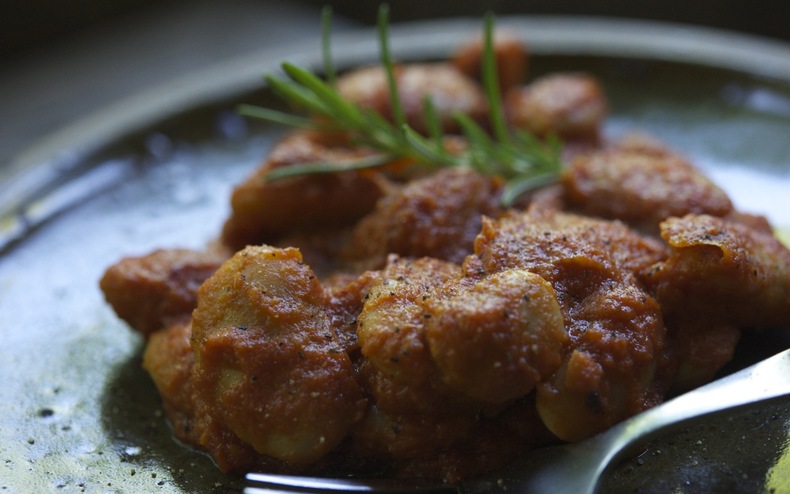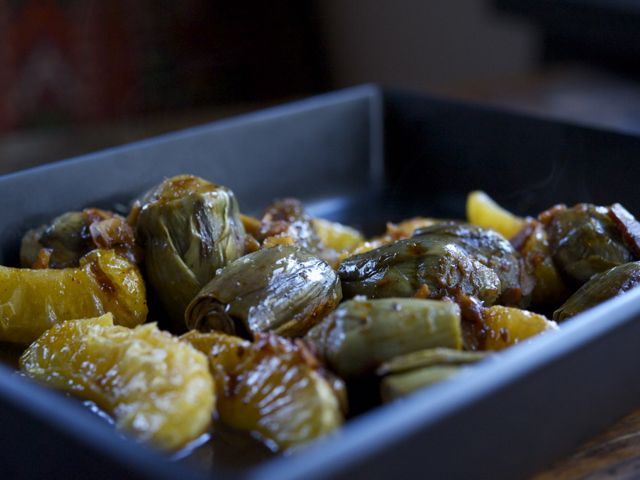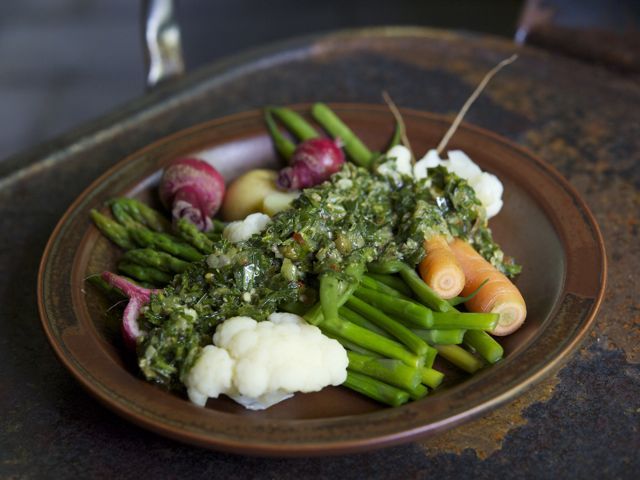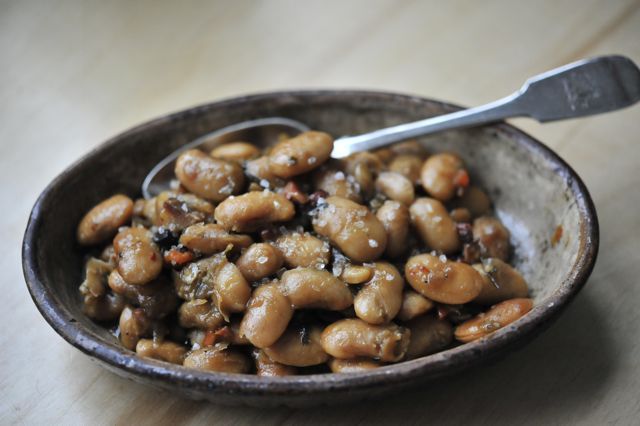A few months ago, yet another large and important study was released with irrefutable evidence that 30 percent of heart attacks, strokes and deaths from heart disease could be prevented if high-risk individuals switched to a Mediterranean diet rich in nuts, beans, fish, fruits, vegetables and olive oil. It's been established that low-fat diets simply can't achieve these results and this is good news for those of us who love olive oil in all its diverse splendor—from mellow gold to vivid green, from rich and buttery to bracing and peppery. Quite frankly, there are few foods it doesn't improve.
Although you might not think of it this way, olive oil is essentially a fresh fruit juice and thus is fairly fragile. It needs to be extracted in a process that doesn't involve nutrient-damaging heat ("cold pressed") and it has to be properly bottled and stored to protect it from air, light and extreme temperatures. Finally, it should be consumed fairly quickly, generally within a year or two of production. Without all of these protections, olive oil (and all high quality oils, really) can quickly turn rancid, developing an off taste that some people liken to crayons or old peanuts (I swear) and a greasy mouthfeel. (For more horifying facts, see this.) The sad truth is that the average American has grown accustomed to consuming rancid oils because that is what is predominantly available. Intrigued? Read all about it in Tom Mueller's excellent Extra Virginity: The Sublime and Scandalous World of Olive Oil. If you don't have time for that, just be sure the olive oil you buy has been produced and cared for with integrity.
Read More...
Twitter @glutton4life
4.5.12 All Choked Up
I grew up in a family obsessed with language. To this day, try as I might, I sometimes cannot stop myself from correcting someone's grammar or droning on about semantics. I still remember the day it dawned on me that the word breakfast was derived from the act of breaking the fast. Another interesting tidbit that has stuck with me is something my father taught me: all the Spanish words that start with "al" are of Arabic derivation. "Alambre" means wire, a material used by the Moors in their ornate filigree; "Alhambra" is, of course, their castle in Andalucía; and "alcachofa" means artichoke, cultivated by the Moors as early as 800 AD in the countryside around Granada. I grew up in California near the epicenter of artichoke production and have been eating these delicious thistles my whole life. I recently shared a plate of them "alla Romana" with G at Boulud Sud, where they were fried to a greaseless crunch and accompanied by a lemony aïoli—perfection! I also adore the big globe artichokes, steamed and doused in lemon. I love to scrape each leaf with my teeth, savoring the green mineral flavor, until I've worked my way to the heart in all its creamy glory.
Read More...
Read More...
7.7.11 Secret Sauce
Salsa verde has more than one guise. In Italy it is a cold rustic sauce vaguely resembling a pesto of sorts but very light, fresh and tangy. Generally it features parsley, capers, onion, garlic, anchovies, vinegar, olive oil and lemon, but may also contain a bit of crumbled white bread, pickles, mustard and other green herbs. It's an opportunity for you to experiment a bit and make it as you like. This is most definitely not the salsa verde you would find in a Mexican restaurant. That one contains tomatillos and chiles and is a whole other conversation; or post, as the case may be. Nor is it quite the same as Argentina's famed chimichurri, which is missing the umami wallop of anchovy. Incidentally, if you still think you don't like anchovies and you leave them out of this sauce, you will be depriving yourself of a great taste sensation. I understand how you might be turned off by the little oily fillets with their hairy-looking bones and fishy aroma, but once they become part of something else—a Caesar dressing, say, or this sauce—they lose their identity and simply impart a rich depth of flavor that is like nothing else. Not to mention they're really good for you. So, salsa verde: the perfect summer sauce to slather on everything grilled, from fish and shrimp to chicken and steak. My other favorite way to eat it? As a dip for garden-fresh raw or lightly blanched vegetables.
Read More...
Read More...
3.1.11 Full of Beans
Is bigger better? Surely not. But it's nice to eat from every end of the spectrum, from the petite kishu to the gargantuan gigante bean. Though there is something to be said for the sheer meaty size of them, these creamy white beans, also known as gigandes or hija, deliver a lot of sweet flavor. Runner beans of Mediterranean origin—probably Spanish or Greek—you’ll see these on meze or antipasto plates, often coated in a dark orange tomato sauce. In Spain, they are sometimes referred to as judías, a word that also means Jews, though I couldn't find any connection. (Speaking of which, did you see John Galliano's drunken, anti-Semitic rant? Wonder how long Natalie Portman's new Sofia Coppola-directed Dior spot will continue to run...) If you can’t find gigantes, you may substitute limas or any large white bean. Dried beans are a delicious source of fiber and protein at any time of year, since they are as appetizing eaten hot in a soup as they are served at room temp. But until fresh beans are coming off the vine (Happy March, by the way), the dried version can be the centerpiece of many a meal. I do enjoy them in broth, but I think my favorite way to eat beans is cooked until they are very soft and have absorbed all the liquid, drizzled with some spicy green olive oil and sprinkled with crunchy sea salt.
Read More...
Read More...











